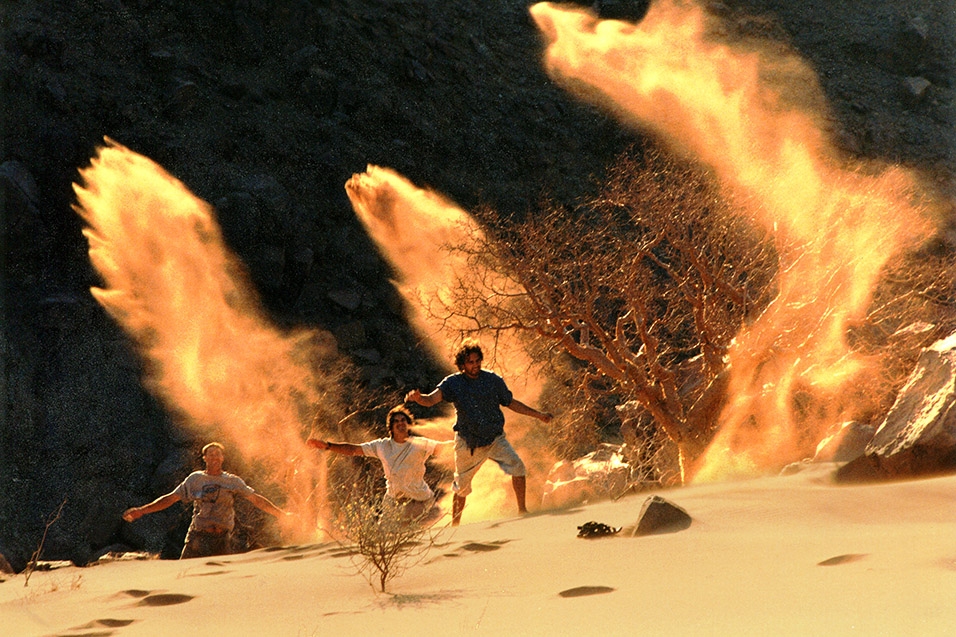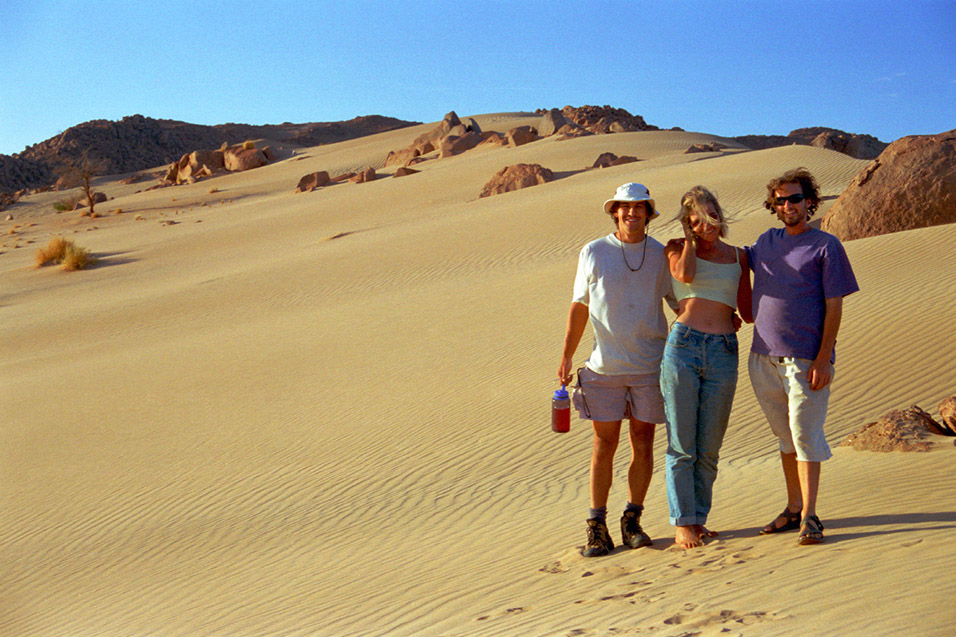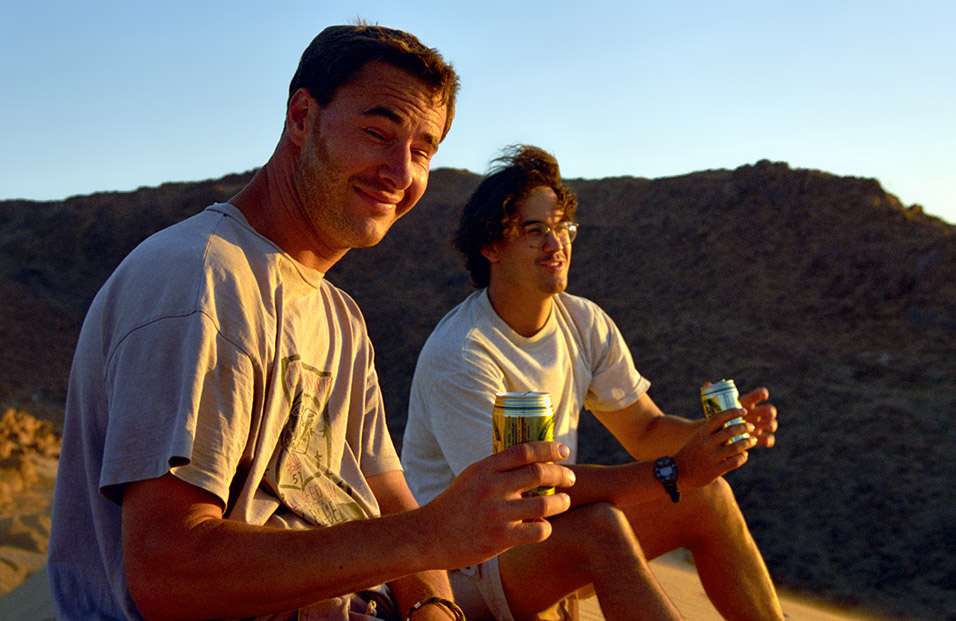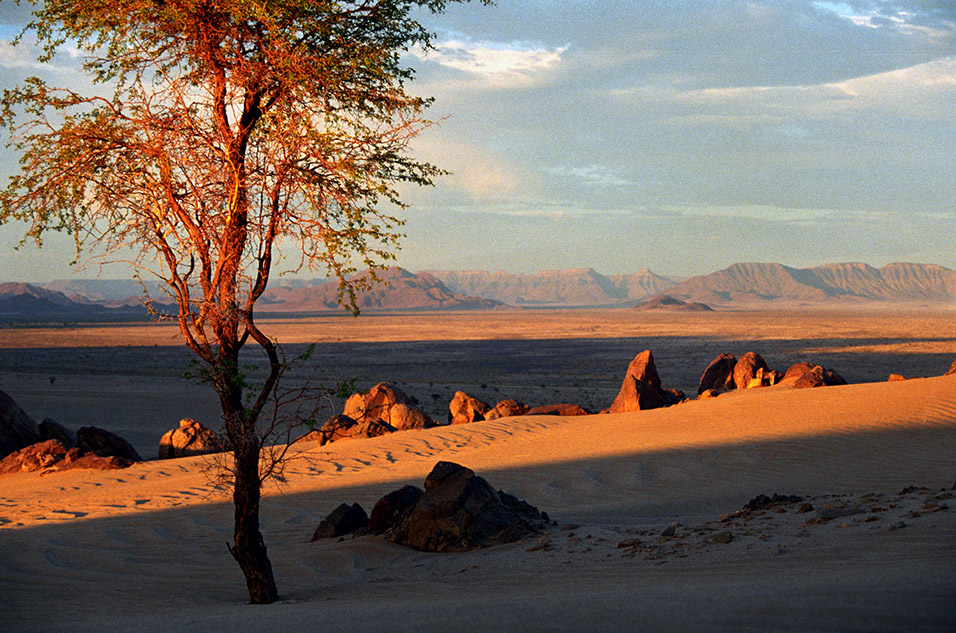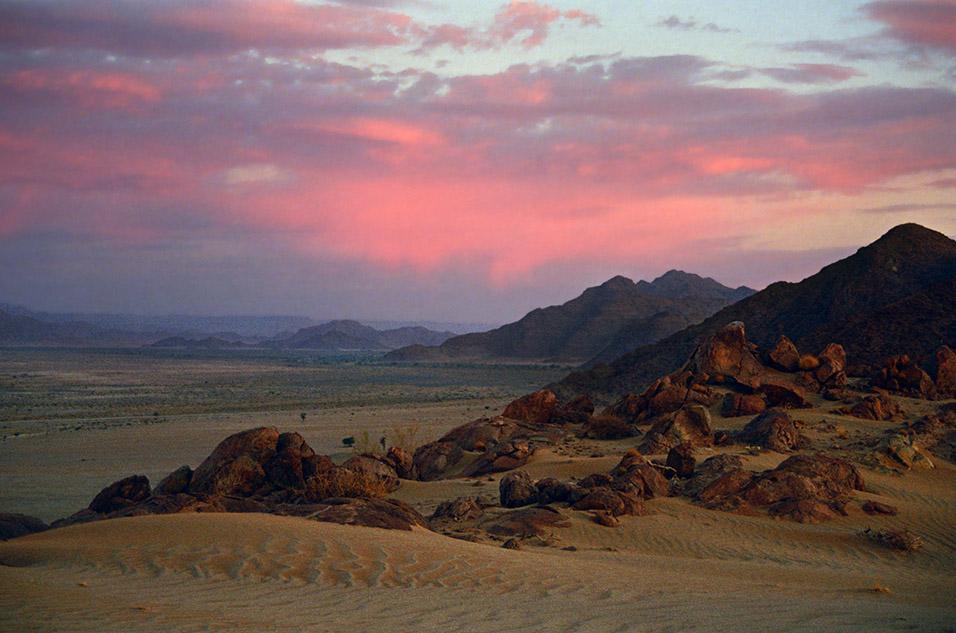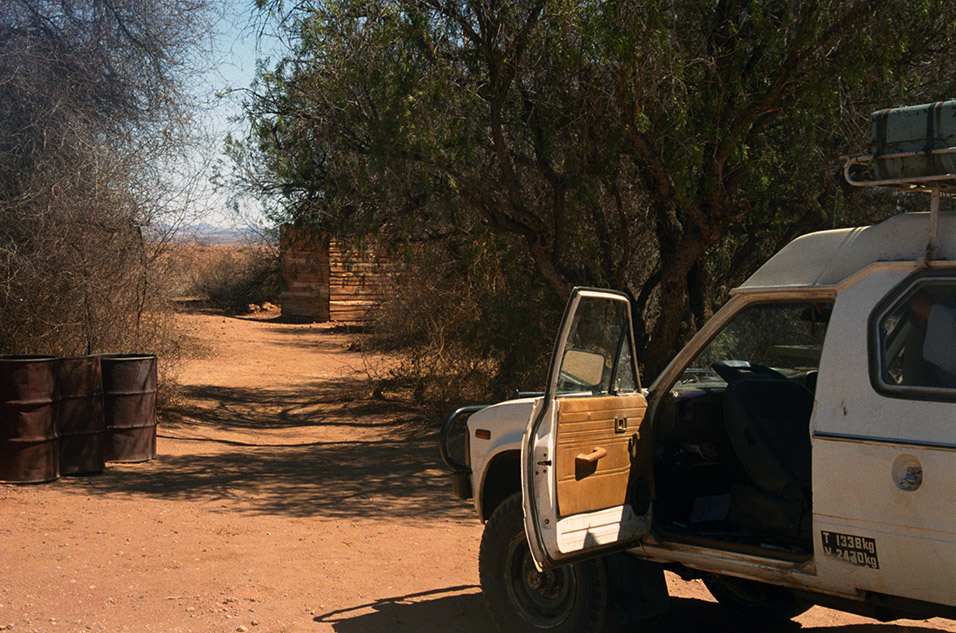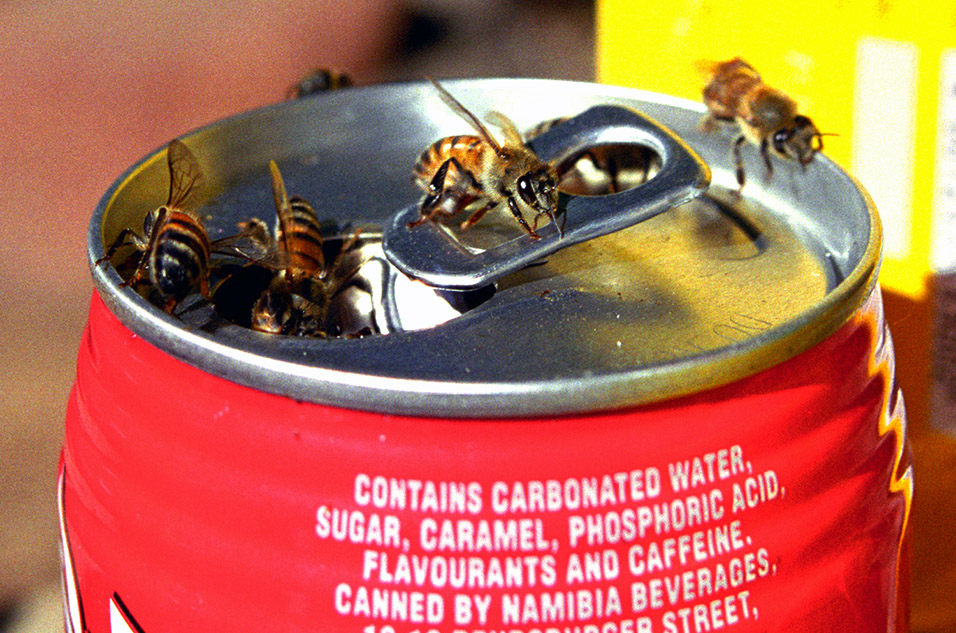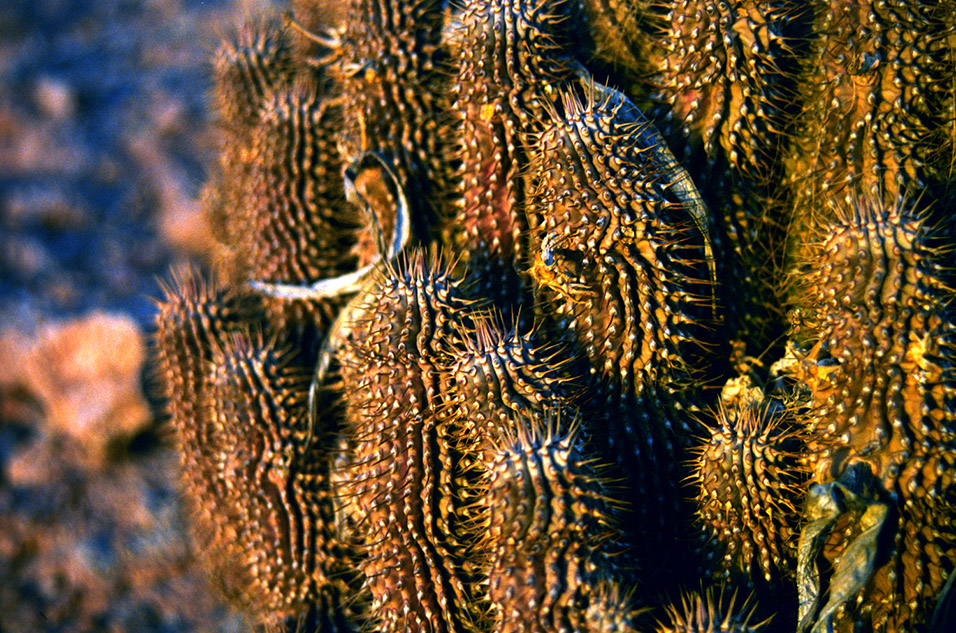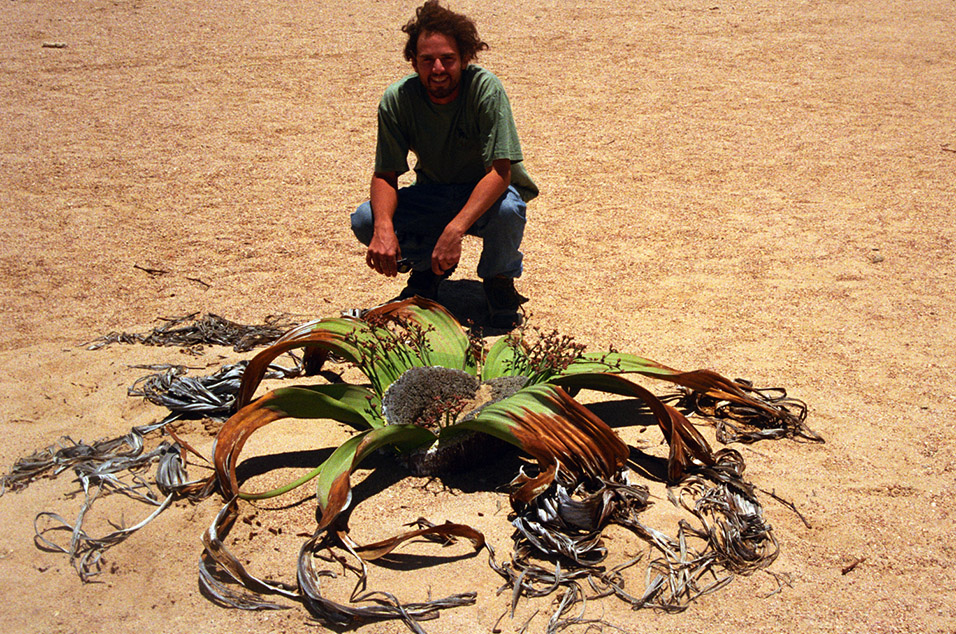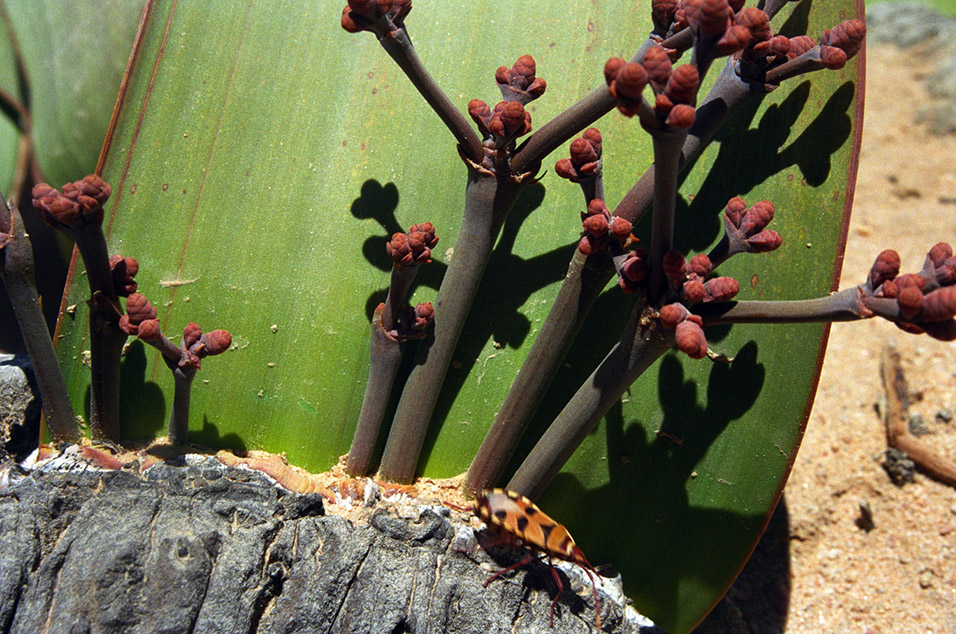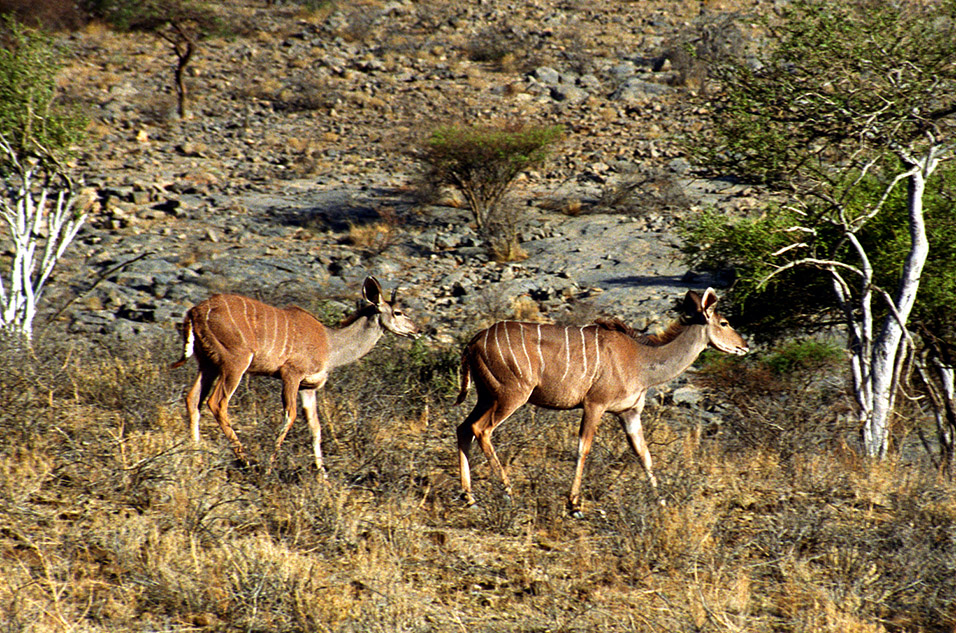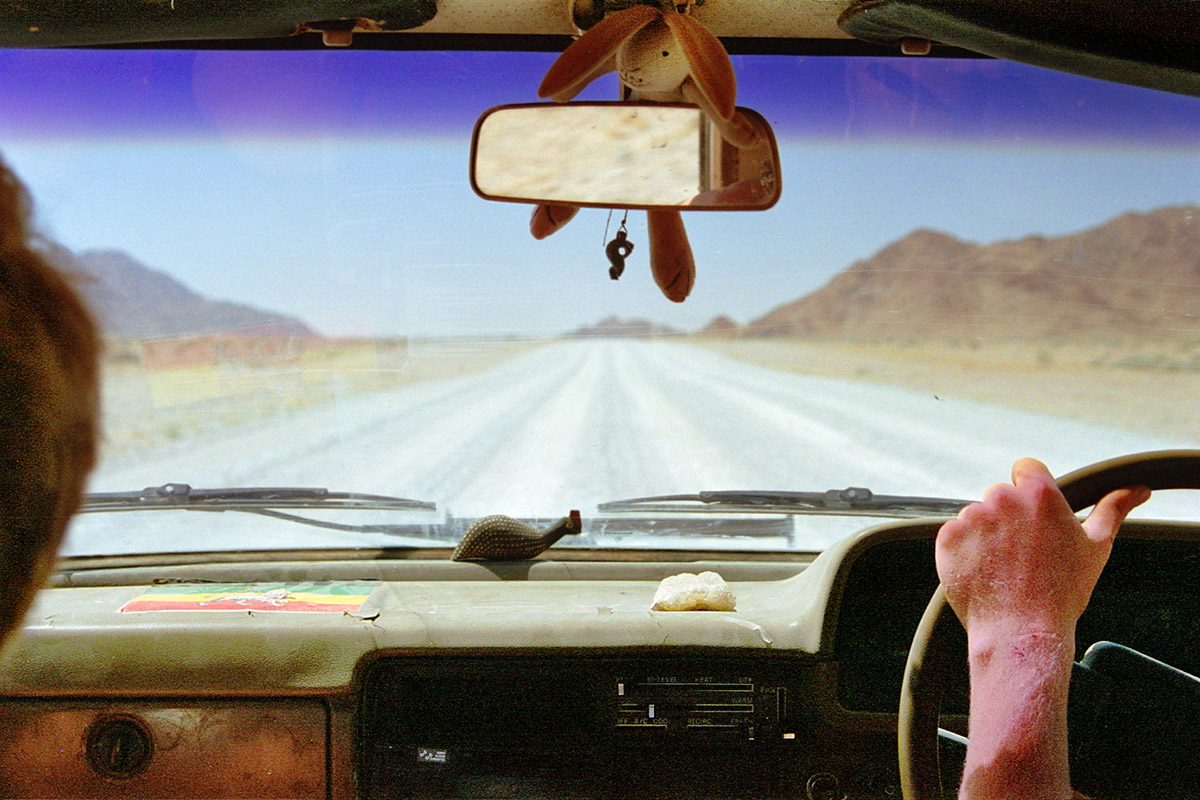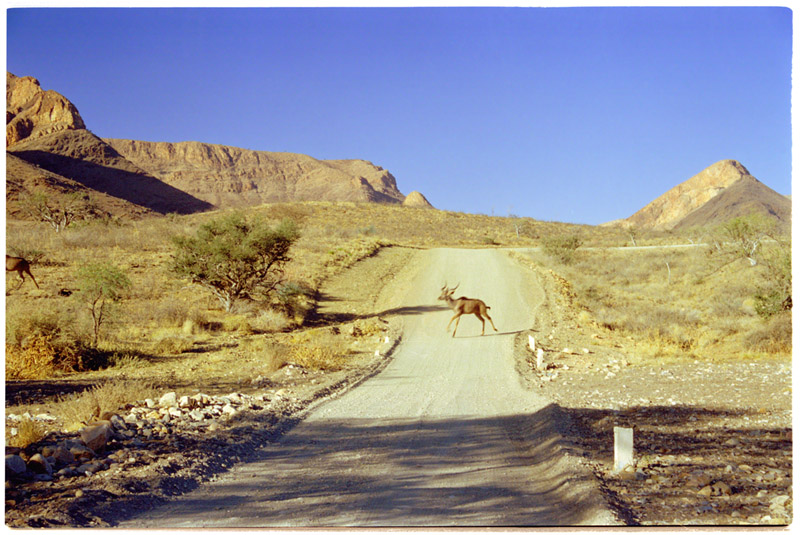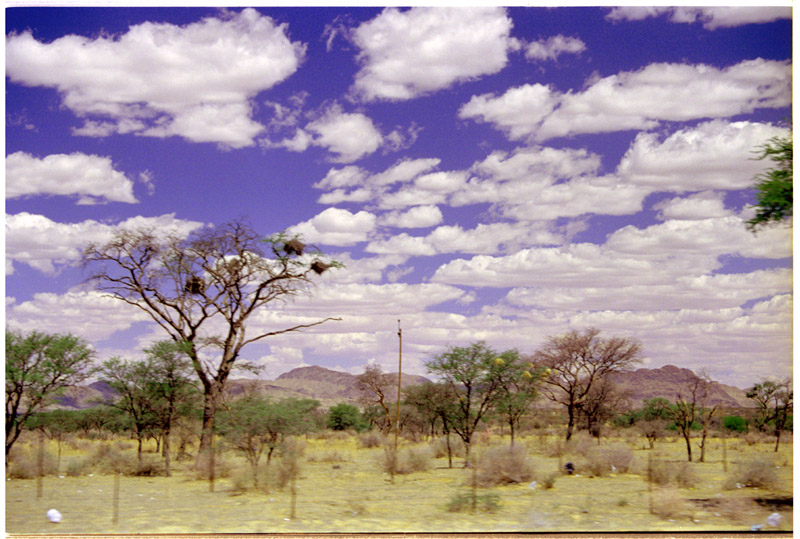Notes by Todd Monge
The Namib-Naukluft National Park on the Western coast of Namibia is the unequivocal highlight of any journey to this diverse country. No where on earth do you find such a diversity of desert habitats; from wind swept dunes, to barren, craggy mountains, to endless, featureless pans. The Namib Desert is a lonely place, and with very little effort you will find yourself wandering alone amongst mountains, dunes, and canyons. The beauty is staggering and it is a place that you will not quickly want to leave. The harsh serenity sooths the soul and the clear desert nights, viewed from the crest of a dune, make you feel as if you were drifting through the infinite depths of outer space.
Practical Information
The Namib-Naukluft National Park is huge, encompassing over 23,000 square miles of desert habitat. Because of its immensity, I have broken the park into the following three sections: The Naukluft Mountains, the Sossusvlei dune fields, and the Namib Desert Park. Each section of the park will be discussed in deeper detail in its own independent area.
Namib Desert Park
The Namib Desert Park is the northern most section of the park. It is easily accessible from Swakopmund and offers a variety of desert-scapes and habitats. There are a variety of different camping options, and as each site is relatively small, it is likely that you will have the site to yourself. In addition to the spectacular scenery, you may be fortunate enough to see small amounts of game, such as oryx or ostrich, roaming the desert.
Sossusvlei
Sossusvlei is simply the most beautiful, dramatic, awe-inspiring part of the Namib-Naukluft National Park. Its huge dunes, some in excess of 300 meters, tower above the valley floor. The blood red sand gives them an eerie, haunted look, and as the sun rises over the dunes, they ignite in a firey blaze of crimson. It is Sossusvlei that draws most people to the Namib-Naukluft National Park, and few who visit are left anything short of speechless.
Naukluft Mountains
The Naukluft Mountains are considerably less dramatic than other parts of the park, however, they are still worth a visit. The craggy peaks rise above a system of desert streams and pools, the water stimulating a splash of emerald in the dusty desert environment. The mountains provide exceptional hiking opportunities, and it is quite likely that you will stumble across baboons, kudu, klipspringer, or even zebra.
Suggested Itinerary
Each area of the Namib-Naukluft National Park is both spectacular and dramatically different than the other areas of the park. In fact, they bare absolutely no resemblance to one another. As such, we at Overland Explorers strongly recommend that you visit each portion of the park. You will not be disappointed. The best way to visit all three main areas of the Namib-Naukluft National Park is via a loop from Windhoek. The loop will take a minimum of five or six days at a leisurely pace, assuming you have your own transport. All roads, except for the final four kilometers to Dead Vlei, are exceptional and can easily be navigated with a 2wd vehicle.
Day 1: Leave Windhoek in the morning, driving south on the B1 road. At the town of Rehoboth go west on the C24 road to Kobos, Reitoog, and Bullsport. The road should be well posted and the route easy to follow. The road may jog at Bullsport, but turn onto the D854 and follow to the turnoff to the Naukluft Mountains Park. It will be posted. You will have to open a gate to allow the vehicle to enter. The road will wind its way down a valley in the park, and after about 10km, you will reach the park office. The campsite is about a kilometer further down the road, in a small canyon, under a canopy of beautiful trees. You should arrive in the late afternoon, which will allow you to set up camp and go for a short hike before darkness falls.
Day 2: The drive from Naukluft Mountain Park to Sossusvlei should not take more than a few hours. Spend the morning hiking, and drive to Sossusvlei around noon. Again, the roads are excellent and the drive should be relatively short. Continue following the D854 road and follow the signs to Sesriem. The road to Sesriem should be a right turn to the north onto route D826. It will be well marked. Stay at the Park Campground so you will be able to reach the dunes of Sossusvlei by sunrise.
Day 3: Rise well before sunrise and drive into the Park. We suggest that you explore the dunes in the eastern part of the park in the morning. This is an excellent time to climb Dune 45. Retire back to camp during the heat of the day and drive to Dead vlei in the late afternoon. Stay for sunset, then return to camp.
Day 4: Drive north to the town of Solitare. You can get petrol and supplies at this great small outpost. (You can also see an entire suricate family.) Continue north on the C14 road to Kusieb Pass and turn west, entering the Namib Desert Park. Drive into the park and choose a camp to spend the night. There are many choices in many different environments, so choose the one that most suits your preference.
Day 5: Explore the Park at your whim. There are many roads to take, all of which offer breathtaking scenery. Cut across from the C14 to the C28 road and drive to Swakopmund to spend the night.
Day 6: Either drive back to Windhoek, or if time permits explore Swakopmund, Cape Cross, or the Skeleton Coast.
If you follow this itinerary you will see the best of the Namib-Naukluft National Park. Yet you will by no means see everything this huge park has to offer. If time permits, lengthen your visit and explore this fabulous Park further. Or, if you are spending a longer period of time in Namibia, consider heading north to visit Cape Cross, the Skeleton Coast, Epopa Falls, and Etosha National Park.
